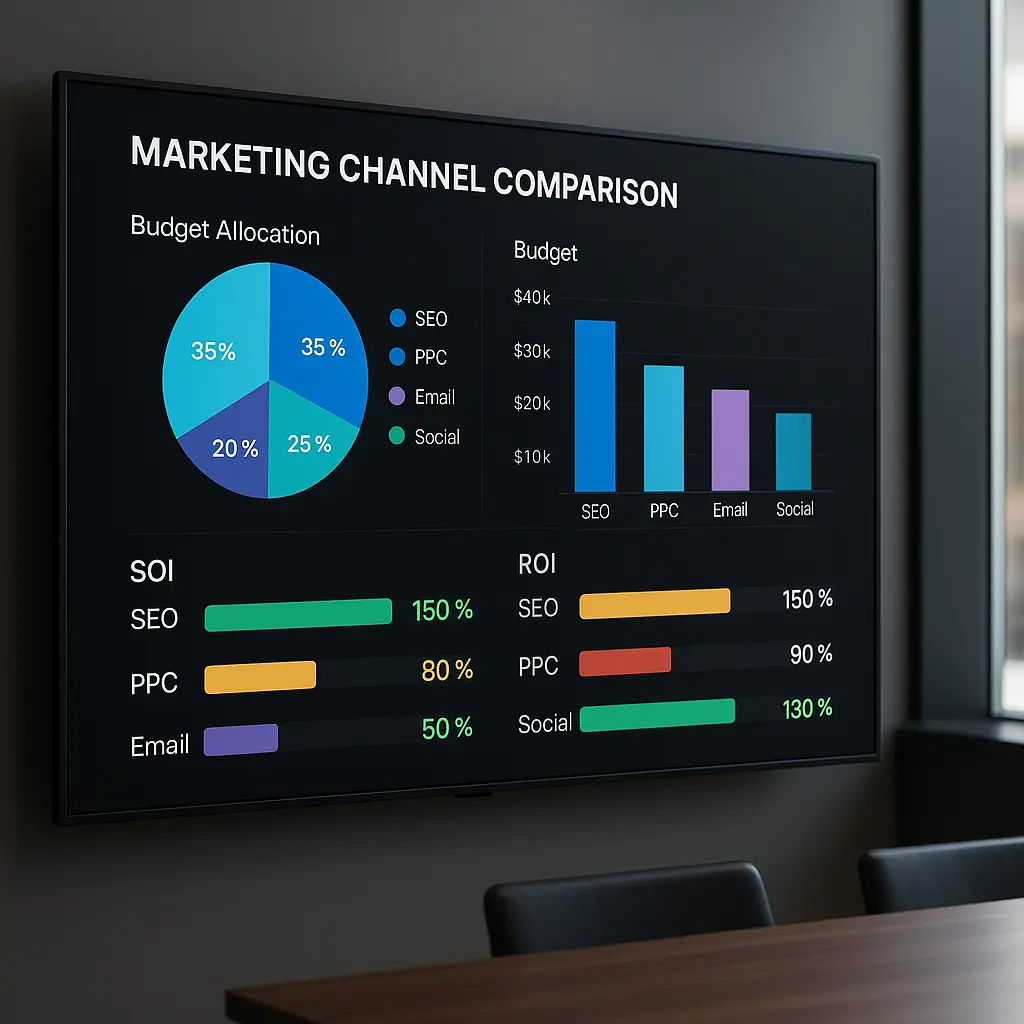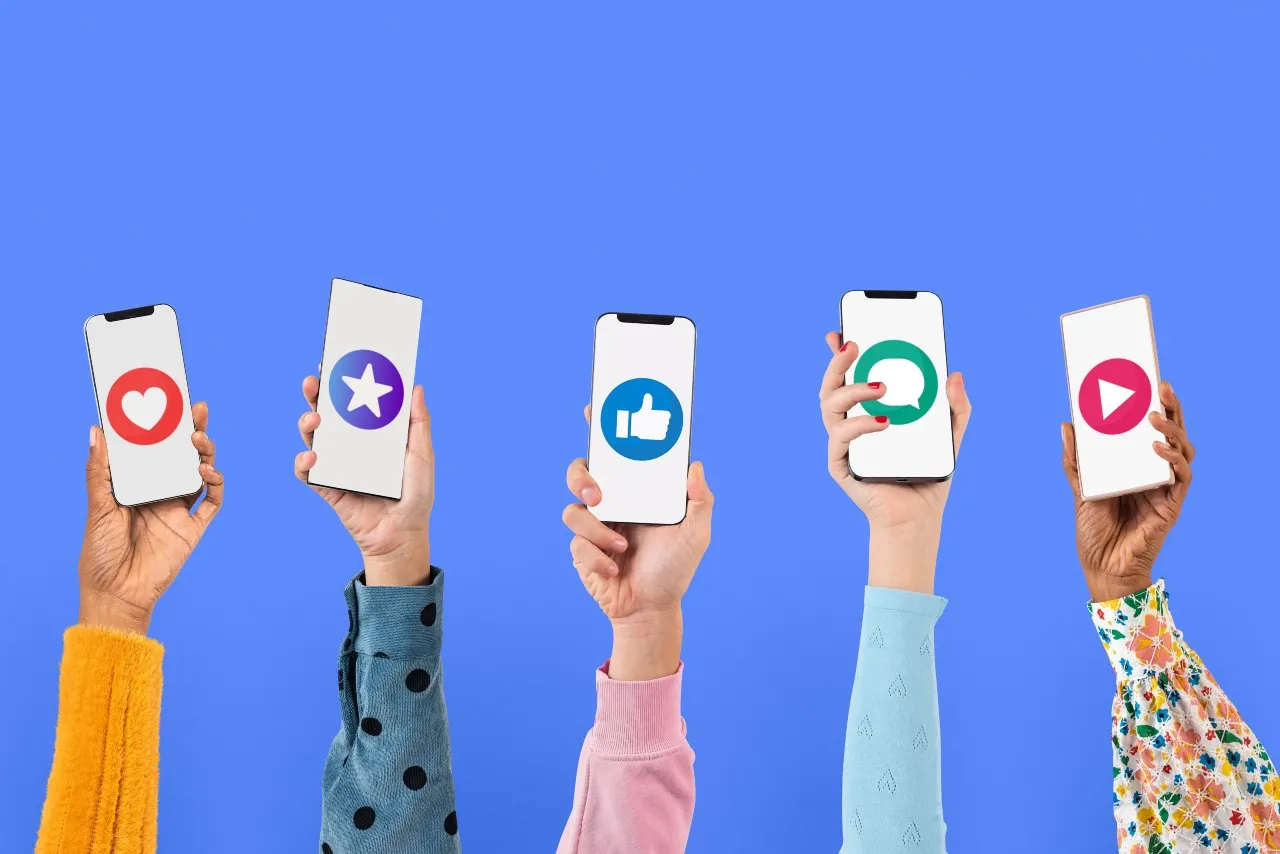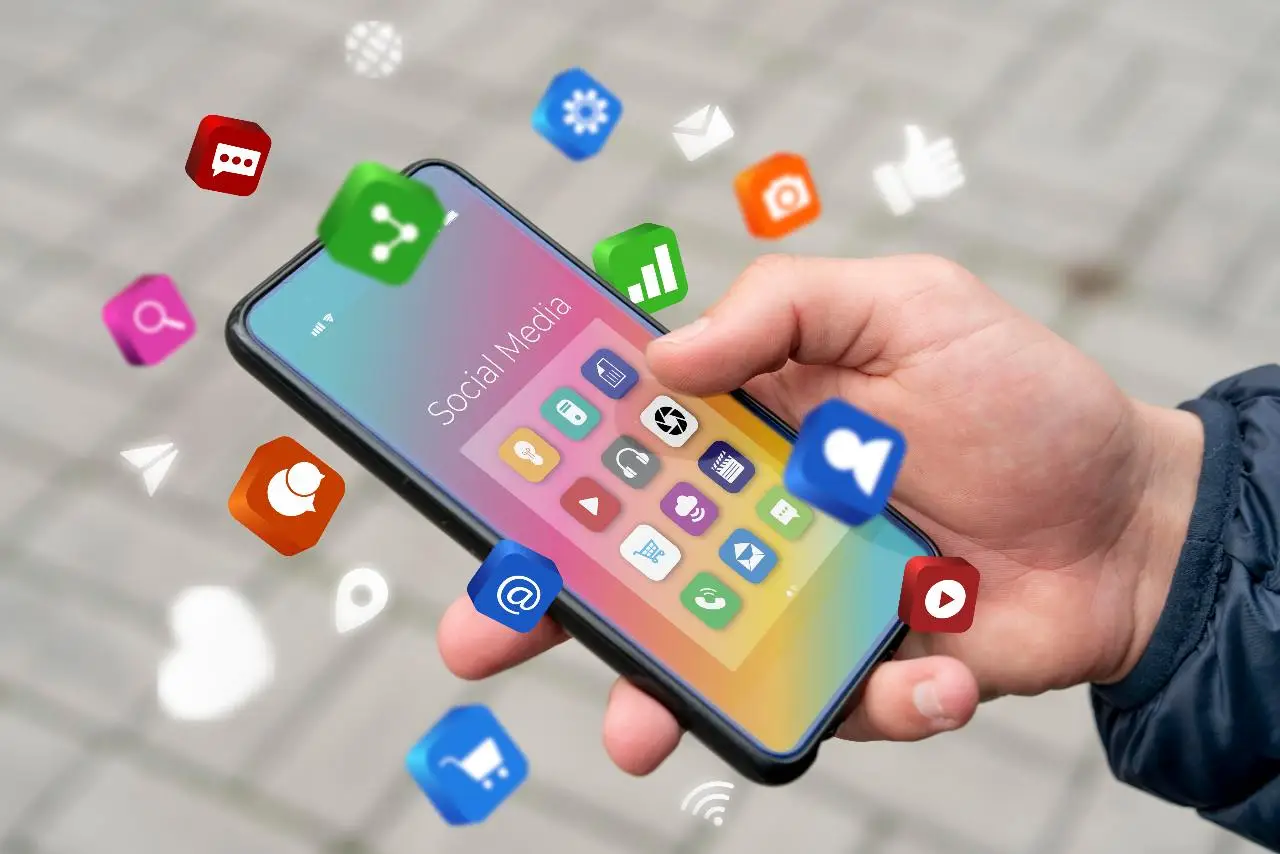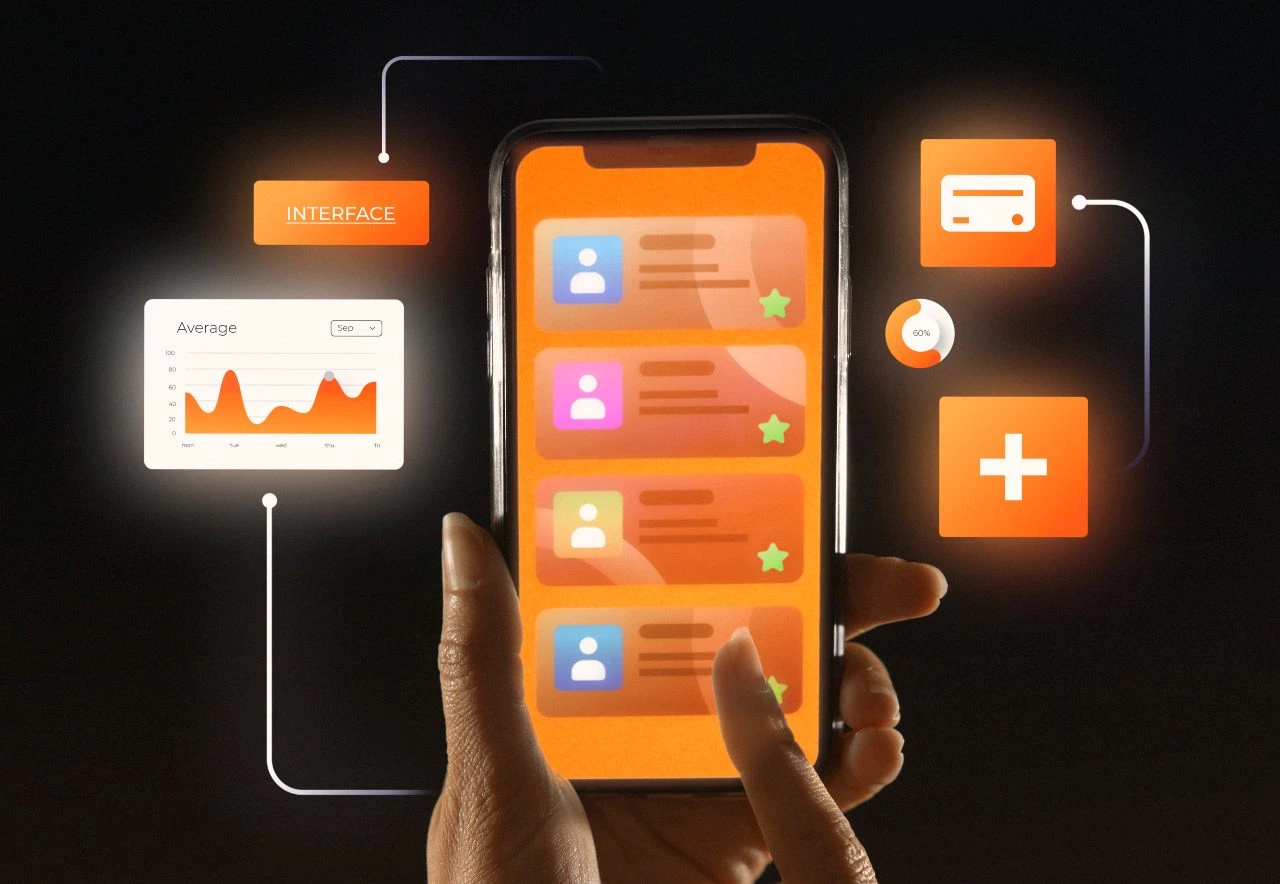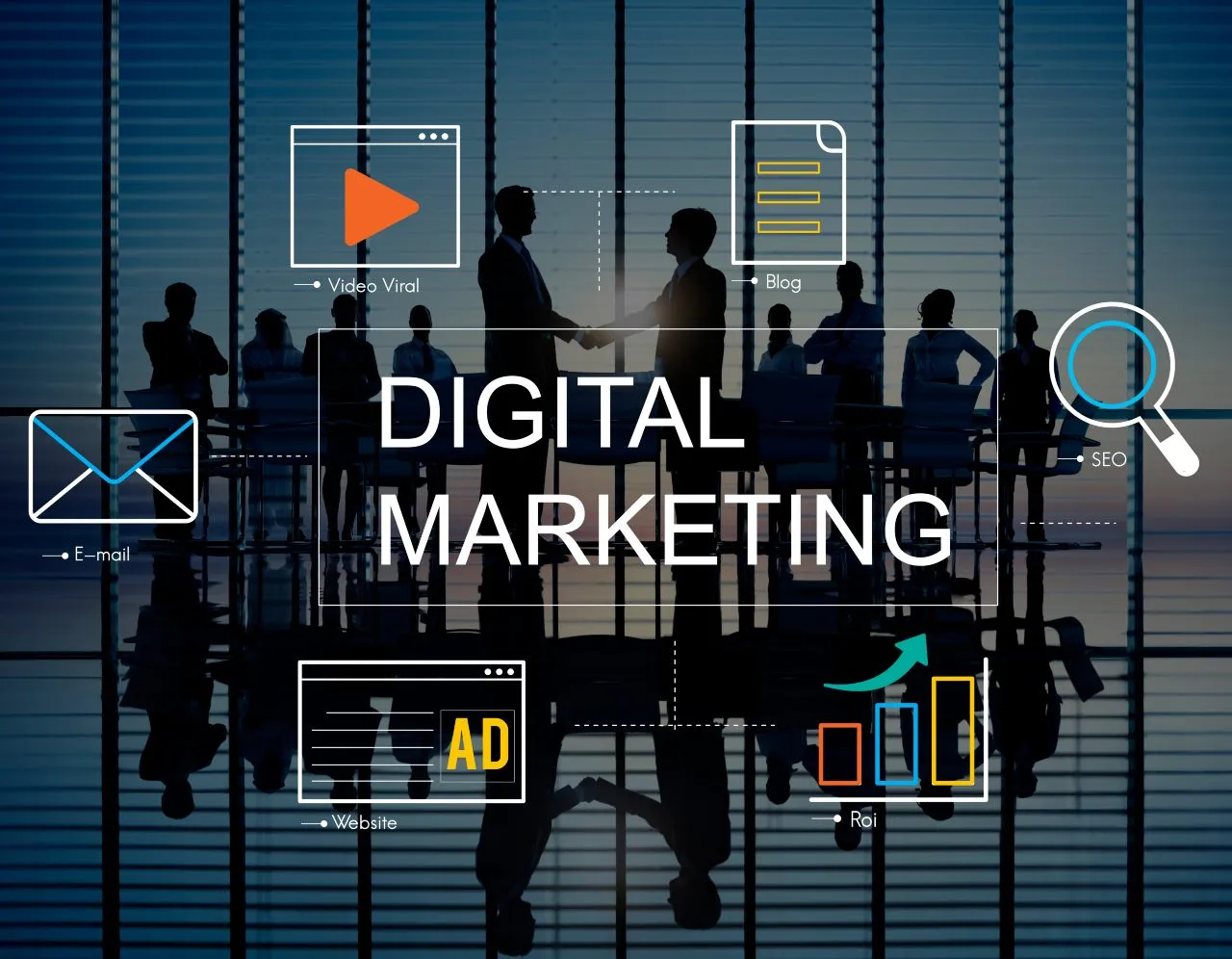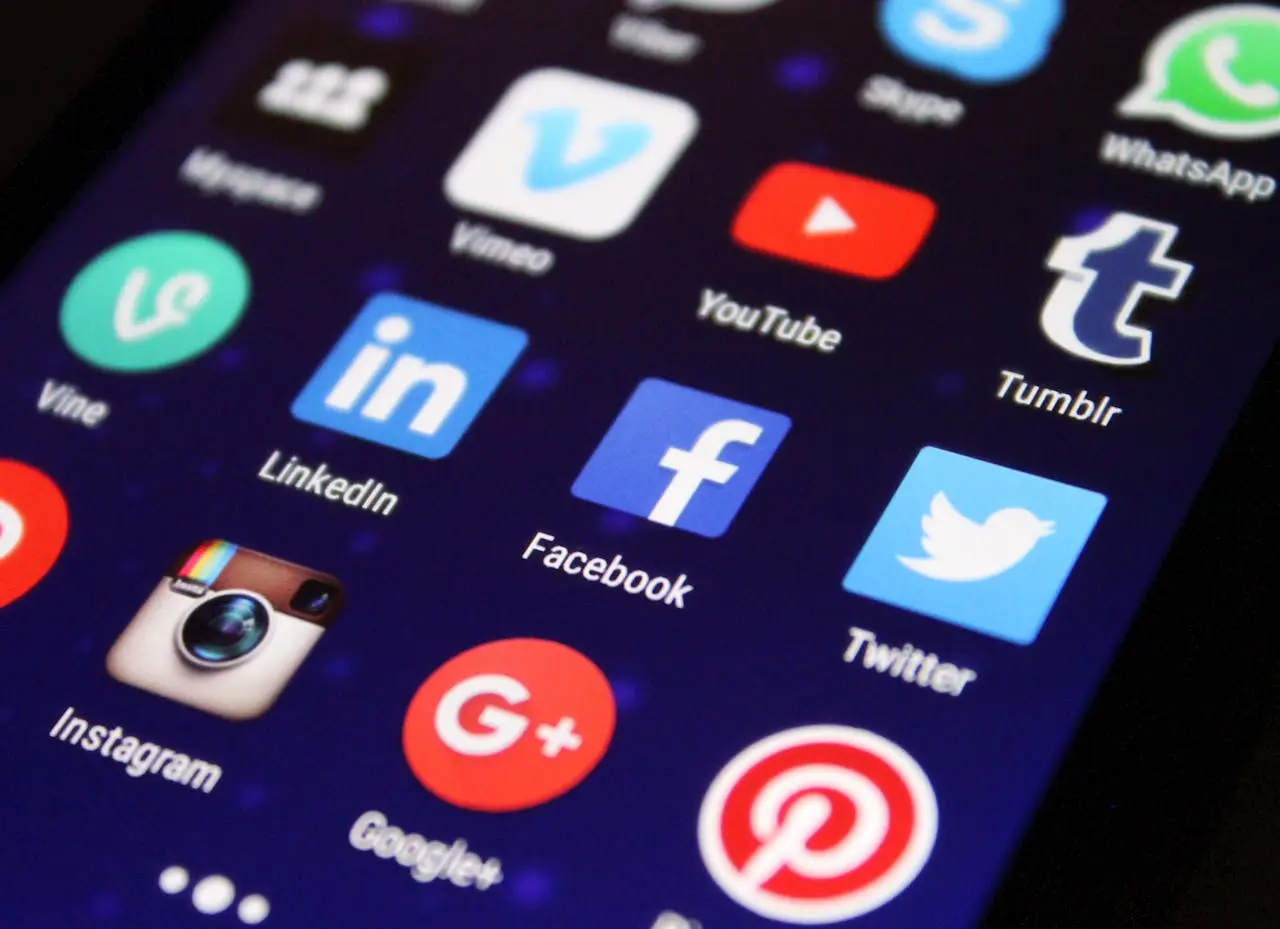Listen to article
Are you ready to discover where savvy marketers are placing their bets in 2025? Here’s a hint: it fits right in your pocket.
Mobile devices have become indispensable, transforming how we interact with the digital world. As a result, mobile marketing has surged to the forefront of advertising strategies. But it’s not just about following a trend; it’s about recognizing a fundamental shift in consumer behavior and capitalizing on unprecedented opportunities.
With smartphone usage soaring and mobile engagement at an all-time high, understanding the trajectory of mobile marketing investment is crucial for businesses looking to stay ahead. Let’s dive in and explore why marketers are betting big on mobile in 2025.
Mobile’s Surging Role in Online Behavior
Within just a few short years, mobile has shifted from a secondary browsing device to the undisputed gateway to the digital world—especially for rising generations. From shopping to social media, the small screen now shapes the vast majority of online experiences, prompting brands to rethink how they engage, design, and market to their audiences. Let’s break down the numbers fuelling this rapid transformation:
- Nearly every internet user aged 16 to 24—an eye-popping 97.6%—owns a smartphone, signalling that mobile-first is non-negotiable for connecting with Gen Z. Source
- Globally, mobile devices edge out desktops for online traffic, accounting for 50.84% compared to 46.39%. Source
- Smartphones now drive 54% of all website visits, further cementing their role as the go-to for digital access. Source, Source
- In the U.S., usage is nearly a dead heat: mobile represents 49% of site visits, while desktop claims 48%. Source, Source
- M-commerce is accelerating: smartphones contributed to over 75% of retail site visits and generated 66% of online orders in the U.S. during Q1 of 2024. Source, Source
- Since 2020, smartphone adoption has skyrocketed worldwide, with 2.61 billion new users coming online in just four years. Source
- The global smartphone user base is expected to hit 4.88 billion in 2024—a leap of 635 million in a single year. Source
The implications are profound: mobile isn’t merely one channel among many—it’s the backbone of digital interaction and commerce. As consumers increasingly expect seamless, frictionless mobile experiences, marketers must think mobile-first at every step, from UX and content to checkout and customer service.
Pro Tip:
Go beyond basic responsive design—invest in fast page loads, streamlined navigation, and accessible mobile features like one-tap calls, autofill forms, and wallet integrations. Test your site on real devices regularly to ensure a truly frictionless experience that keeps users coming back.
How Mobile Dominance Is Reshaping Consumer Behavior
As smartphones become the default gateway to the internet, brands are facing a new reality: attention is no longer just fragmented across platforms, it’s deeply concentrated in our palms. Consumers are not only interacting with content more frequently but are also forming habits around mobile-first experiences—making it imperative for marketers to meet them where they live, scroll, and shop.
- In 2024, American adults are spending an average of 3 hours and 45 minutes daily on their smartphones—almost an hour more than in 2019, signalling a steep rise in mobile engagement over a short period. Source
- Mobile apps have become the arena of choice, with users devoting around 3 hours and 28 minutes per day to apps, while web browsing lags far behind at just 51 minutes. Source
- Worldwide, the average person spends 3 hours and 50 minutes accessing the internet via their smartphone daily, showing just how universal the mobile-first mindset has become. Source
- Daily smartphone use varies by country, ranging from 1 hour and 54 minutes up to a staggering 5 hours and 20 minutes. Source
- First-time app downloads are set to hit 183.7 billion globally in 2024, speaking to the relentless appetite for fresh mobile experiences. Source
- Mobile now commands 50.5% of website traffic, overtaking desktop’s 46.5%, reflecting a clear shift in how people discover and interact with brands online. Source
Mobile’s meteoric rise isn’t just about minutes logged—it’s about shaping consumer expectations for immediacy, personalization, and seamless interaction. Brands that treat mobile as their strategic starting point are better positioned to capture fleeting attention and drive meaningful engagement than those still optimizing mobile as an afterthought.
Pro Tip:
If you want users to stick around, don’t just make your site mobile-friendly—think mobile-first. Prioritize lightning-fast load times, tap-friendly interfaces, and app-like functionality to deliver a frictionless experience that stands out in the palm of your customer’s hand. For businesses looking to scale these efforts effectively, digital marketing strategies for small businesses can provide actionable insights to enhance mobile optimization and drive results.
Where Marketers Are Doubling Down: Mobile’s Expanding Budget and Bold New Tactics
Mobile has firmly cemented itself as the backbone of digital marketing spend, but today’s investments go far beyond sheer volume—they reflect a rapid shift in strategies designed to match fast-changing consumer behaviors. Marketers aren’t just pouring more dollars into mobile channels; they’re leveraging a mix of advanced targeting, immersive ad formats, and AI-powered insights to keep pace with audiences glued to their phones. As mobile platforms continue to dominate how people discover, interact, and shop, industry leaders are racing to innovate and personalize the experience at scale. Here’s how these shifts are playing out in the numbers:
- Global spending on mobile advertising is projected to reach $402 billion in 2024, marking an 11% increase from the previous year, fuelled by the popularity of short-form videos and video-sharing apps. Source
- In 2022, global mobile marketing expenditure reached $327 billion, with projections estimating it will hit $400 billion by 2024. Source
- Mobile is expected to account for 70% of all ad spending by 2028. Source
- In the U.S., mobile ad spending is forecasted to exceed $216 billion in 2024, up from $194.8 billion in 2023. Source
- Social media ad spending is projected to reach 219.8 billion in 2024, with mobile contributing $255.8 billion by 2028, demonstrating the channel’s growing importance in the advertising landscape.
- SMS marketing in the U.S. is projected to reach $12.6 billion by 2025, with an annual growth rate of 20.3%. Source
- 94% of small businesses plan to increase their digital marketing spending in 2024, highlighting the importance of digital channels, including mobile. Source
- AI and ML technologies are enabling advertisers to analyze vast amounts of data, gaining valuable insights into user preferences, behaviors, and intent for more accurate and targeted ad campaigns. Source
- Advertisers are increasingly exploring high-impact mobile ad formats beyond traditional banner ads to deliver more immersive and interactive experiences to users. Source
- Native advertising is on the rise, seamlessly integrating sponsored content into the user experience of mobile apps and websites by mimicking the look and feel of the surrounding content, making ads less intrusive and more engaging. Source
What these figures reveal is a market that refuses to stand still—ad budgets are rising, but so is the bar for creativity and relevance. As brands compete for attention on ever-crowded screens, the winners will be those who prioritize dynamic strategies: blending SMS for immediacy, social for engagement, and next-gen ad formats for memorability. The smartest marketers are combining dollars with data, using AI to target the right audience with the right message at the right time.
Pro Tip:
Don’t just increase your mobile budget—evolve your tactics. Layer in emerging mobile ad formats, test interactive and native placements, and let AI guide your optimizations. The future belongs to marketers who experiment boldly and adapt quickly.
Where Mobile Excels in Marketing ROI
Marketers are chasing impact, not just impressions—and mobile is where those results are being realized. As mobile device usage cements itself at the core of daily life, brands tapping into this channel aren’t just following consumer habits—they’re capitalizing on a proven engine for returns. With the growing dominance of mobile-first experiences, it’s no surprise that marketers are diverting bigger budgets toward mobile initiatives.
- Email marketing boasts one of the highest returns on investment, closely followed by SEO, mobile marketing, and content marketing, highlighting the effectiveness of mobile marketing as a channel for generating ROI. Source
The evidence is clear: mobile marketing is more than a trend—it’s a true revenue driver. As consumers spend more of their digital lives on smartphones, the brands that innovate in mobile engagement—from SMS to app-based campaigns—are setting themselves up for measurable growth.
Pro Tip:
Don’t just set and forget your mobile campaigns. Use real-time analytics to monitor performance and A/B test your creatives, CTAs, and timing. Small tweaks can make a dramatic difference in your ROI.
How Mobile Video Is Reshaping Brand Engagement and Ad Performance
Consumers are now spending more time watching video on their phones than ever before, changing not only how content is consumed but also how it spreads. The rise of mobile-first social platforms and new ad formats means that brands who prioritize vertical, interactive video are the ones most likely to capture audience attention—and keep it. Instead of treating mobile video as an afterthought, forward-thinking marketers are building campaigns that put mobile viewers front and center.
- Smartphones have taken over as the top screen for video, with 70% of online video viewers using their smartphones.
- Social video is a mobile phenomenon: 92% of videos viewed on mobile devices are shared, creating viral potential that desktop can’t match.
- On X (formerly Twitter), 93% of video viewers are on mobile devices, confirming that mobile-optimized formats perform best across social channels.
- Interactive shoppable video ads are seeing rapid adoption on Instagram, Pinterest, TikTok, and YouTube, and can significantly boost conversion rates.
- Marketers are doubling down on video-friendly platforms like YouTube, TikTok, and Instagram in 2025, aiming to meet consumers where they already are. Source
- Short-form video delivers on engagement: nearly all are watched for more than 40% of their duration, with 59% keeping viewers for 41-80% of their length, and 30% achieving an impressive 81%+ average watch rate. Source
What’s clear is that mobile video is rewriting the rules of digital advertising. Rather than just pushing traditional TV spots onto mobile screens, successful brands are embracing snackable, interactive formats that encourage sharing and action. Those who adapt their creative and ad buys for the mobile-first reality will be rewarded with more views, higher engagement, and better ROI.
Pro Tip:
To thrive in the mobile video space, create content that’s both visually captivating and easy to consume on the go. Use vertical video, incorporate interactive features (like polls or embedded shopping links), and keep messaging clear within the first few seconds to drive instant engagement and shares.
Mobile Moves the Needle on Consumer Spending
If you’re wondering where the battleground for consumer spending has shifted, look no further than the palm of your hand. The rapid surge in mobile commerce signals a deeper change in how shoppers discover, research, and ultimately buy products. Brands that meet users where they are—on mobile—are gaining a significant advantage as purchasing habits become more impulsive and convenience-driven.
- Mobile sales now account for 55.25% of all online sales, marking a decisive shift past desktop shopping.
- Approximately 61% of consumers are more likely to purchase from mobile-friendly websites, revealing just how critical mobile optimization is to winning conversions.
- A striking 92% of smartphone searchers complete a purchase related to their query, showing how mobile search bridges the gap between intent and action.
- Mobile commerce is on an upward trajectory, with retail sector sales projected to hit 10.4% by 2025—double pre-pandemic levels.
- Over half of online searches and shopping now happen on mobile, putting the spotlight on seamless mobile journeys from discovery to checkout.
- A compelling 91% of mobile owners have made a purchase after seeing a relevant ad, underlining the immediacy and effectiveness of mobile advertising.
- Mobile commerce is set to generate a staggering $2.52 trillion in sales in 2024, up 16.3% from the previous year.
- Shopping apps now boast 48% higher user engagement compared to the average app—a testament to consumer preference for app-based retail experiences.
- By 2024, an estimated 187 million U.S. consumers—66% of the population—will shop via mobile, redefining mainstream retail engagement.
- Dedicated mCommerce apps have seized the lead, accounting for 54% of all mobile commerce payments.
Mobile is no longer just a sales channel; it’s the epicenter of digital commerce strategy. Shoppers expect instant access, intuitive navigation, and frictionless checkouts—whether browsing a website or tapping through a branded app. Those lagging in mobile optimization risk not only missed sales, but also eroding customer trust and loyalty as the bar for convenience rises ever higher.
Pro Tip:
Don’t just optimize your site for mobile—think beyond the basics. Leverage mobile-specific features such as one-tap checkout, push notifications for abandoned carts, and exclusive in-app incentives to deepen engagement. Investing in a dedicated shopping app can deliver personalized experiences that turn casual browsers into loyal customers.
The Rise of AI and AR: Elevating Mobile Brand Interactions
The expectation for seamless, on-demand experiences has never been higher—and brands that harness AI and AR are leading the charge in mobile innovation. These technologies are not just upgrading customer service; they’re redefining how people discover, engage with, and feel about brands on their smartphones. By blending intelligence with interactivity, brands are setting new standards for convenience and wow-factor that consumers increasingly expect.
- The global chatbot market is experiencing substantial growth, projected to reach $15.5 billion by 2028, up from approximately $5.4 billion in 2023. Source
- AI-driven conversational marketing is enabling brands to engage with customers on a more personal and interactive level, fostering stronger relationships and improving customer satisfaction. Source
- A significant 61% of consumers express a preference for retailers that offer Augmented Reality (AR) experiences, highlighting the growing demand for interactive shopping solutions. Source
- The global AR market is anticipated to reach $198 billion by 2025, fueled by its increasing adoption in mobile marketing strategies. Source
- AR marketing integrates digital elements into the real world, creating interactive and immersive experiences for users. In 2025, AR will be a key strategy for brands looking to engage and captivate their audiences. Source
The direction is clear: brands that want to stand out must move beyond static mobile experiences to deliver truly personalized and immersive touchpoints. As AI and AR become more accessible, even smaller brands can raise their customer engagement game—think real-time product support or “try-before-you-buy” AR previews right in the palm of your hand. Those who embrace this technology today aren’t just keeping up; they’re shaping what mobile brand loyalty will look like in the years ahead.
Pro Tip:
Take advantage of AI-powered chatbots that grasp intent and context for smarter, more human conversations at scale. Elevate your mobile campaigns by integrating AR features—from virtual product demos to interactive guides—to spark curiosity and boost purchase confidence, transforming browsing into memorable, conversion-ready journeys. For a more comprehensive approach to digital marketing, consider full-service marketing solutions to amplify your mobile and AR strategies effectively.
The Surge in Mobile Search Ad Investments
As the modern consumer journey increasingly starts on a smartphone, marketers are recalibrating their budgets to reflect where attention truly lives—on mobile search. With more queries happening on handheld devices than ever before, brands that overlook this channel risk missing out on high-intent audiences who are ready to act in real time.
- Ad spending in the Search Advertising segment is projected to reach $118.2 billion in 2025, highlighting the continued importance of search advertising in the digital marketing mix. Source
- Search marketing accounts for 42% of all digital marketing spending, underscoring its significance as a key channel for reaching and engaging consumers online. Source
What’s especially notable is not just the sheer volume of dollars funneled into mobile search, but its effectiveness at capturing moments of consumer intent. Brands that invest here aren’t just chasing impressions—they’re activating a channel where purchase decisions often happen within seconds. As mobile search cements itself as the backbone of digital ad strategies, the savviest marketers are rethinking user experience from the ground up, ensuring each click leads to an easy, frictionless path to conversion.
Pro Tip:
Think beyond keywords—focus on hyperlocal intent, seamless mobile UX, and fast-loading, mobile-optimized landing pages. Harnessing features like click-to-call extensions and responsive ad formats can further boost engagement and convert mobile traffic into loyal customers.
Conclusion
The surge in mobile marketing investment is no coincidence—it’s a direct response to the undeniable dominance of mobile devices in shaping consumer behavior. With mobile driving more internet traffic, higher engagement rates, and a significant share of e-commerce sales, it’s clear that businesses must prioritize mobile-first strategies to stay competitive. The data also highlights exciting opportunities, from leveraging AI and augmented reality to creating interactive video content tailored for mobile users. Marketers who embrace these innovations can not only connect with their audiences but also deliver exceptional, personalized experiences that drive long-term loyalty.
For businesses, the message is clear: mobile is no longer just a piece of the puzzle—it’s the foundation. Whether it’s optimizing your mobile website, refining ad campaigns, or integrating cutting-edge technologies, the potential ROI is immense.
Ready to boost your traffic and grow your website? Your customers are looking for you, and our SEO services can help you be found across search engines. Partner with us to align your strategies with the mobile-first future and unlock measurable results today!
About Why Marketers Are Betting Big on Mobile in 2025
This guide was written by the Scopic Studios team and reviewed by Araksya Hakobjanyan, SEO Lead at Scopic Studios.
Scopic Studios delivers exceptional and engaging content rooted in our expertise across marketing and creative services. Our team of talented writers and digital experts excel in transforming intricate concepts into captivating narratives tailored for diverse industries. We’re passionate about crafting content that not only resonates but also drives value across all digital platforms.
Note: This blog’s feature image is sourced from Freepik.













































































































